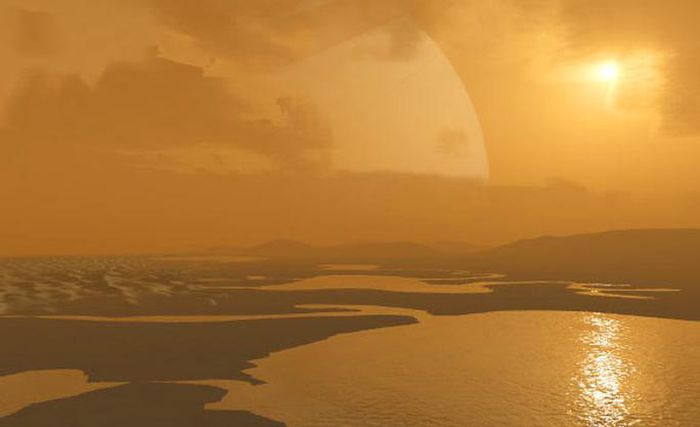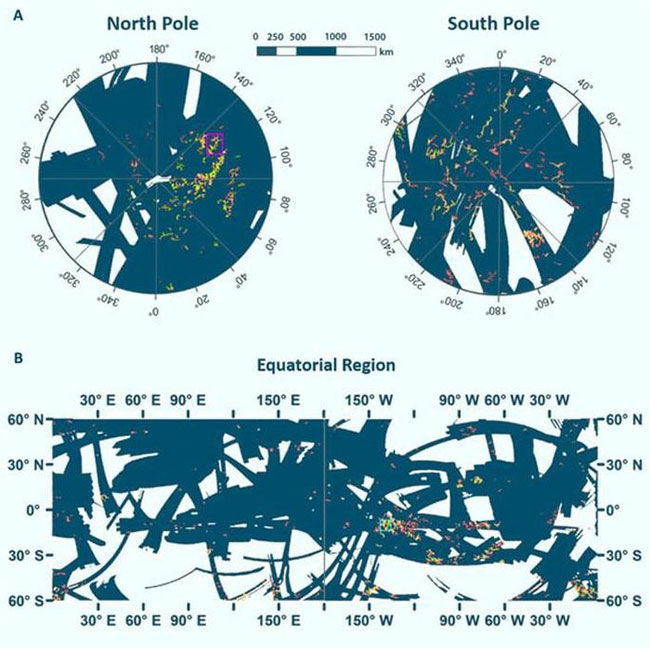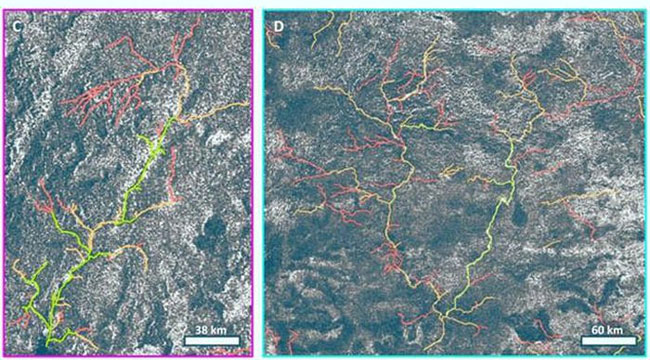The astonishing similarity between the terrain of Earth and Saturn’s moon Titan has provided astronomers with a foundation for mapping the rivers and channels on this extraterrestrial world.
Recent research published in the Planetary Science Journal has presented a detailed map of the river systems and channels on Titan, described as a world with a “labyrinthine landscape.”

Graphic depiction of the current landscape on Titan – (Image: Benjamin de Bivort)
This map, based on invaluable observations from NASA’s Cassini spacecraft, reveals a landscape strikingly similar to river maps on Earth. However, according to the research team led by Dr. Alex Hayes from the Cornell University Department of Astronomy, while Earth’s hydrological system is based on water, the equivalent on Titan is liquid methane and ethane, which fill the channels, lakes, rivers, and seas.
According to Sci-News, understanding the features of this unique river system will help scientists comprehend the sediment transport system of the moon as well as the geological systems beneath its surface.


The river and lake system map of Titan is very similar to Earth – (Image: NASA).
“They tell you how organic materials are transported across Titan’s surface and identify locations where materials may accumulate near areas showing signs of tectonic activity, or possibly even cryovolcanoes. Furthermore, these organic materials could be transported down to the subsurface oceans containing actual liquid water on Titan, or materials from below could be brought to the surface,” he further explained.
To create this map, scientists used radar images from Earth as a foundation, given the striking similarities between the surfaces of the two celestial bodies.
These maps will provide data to guide NASA’s Dragonfly mission – set to launch in 2027 and arrive at Titan in 2034 – with the goal of conducting deeper research and searching for life on a world that NASA has described as an extraterrestrial replica of Earth.


















































